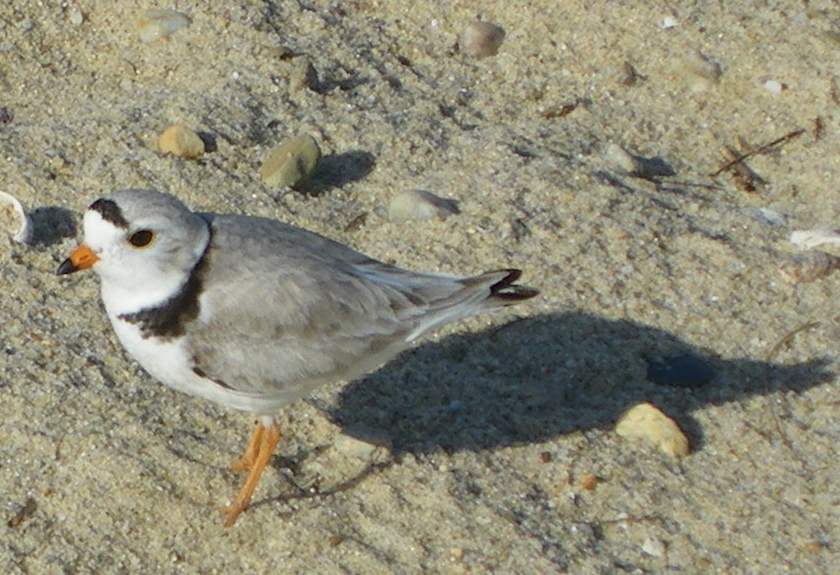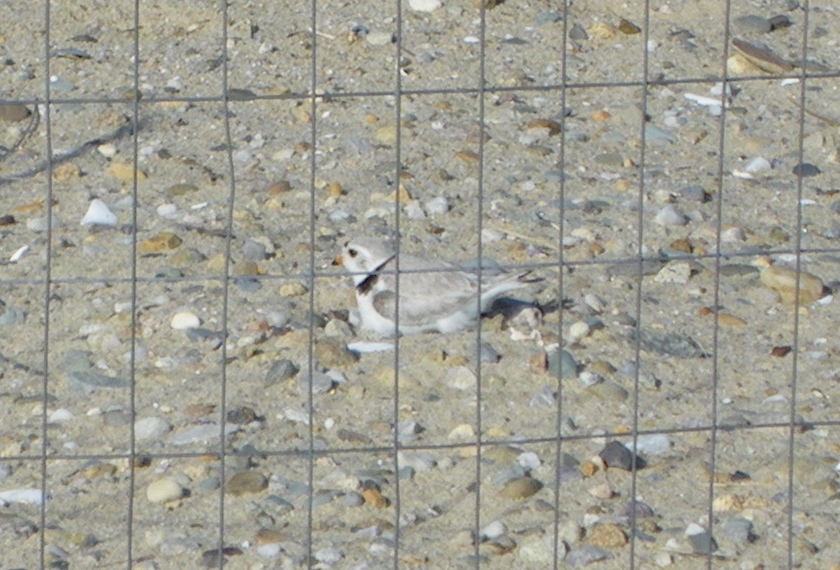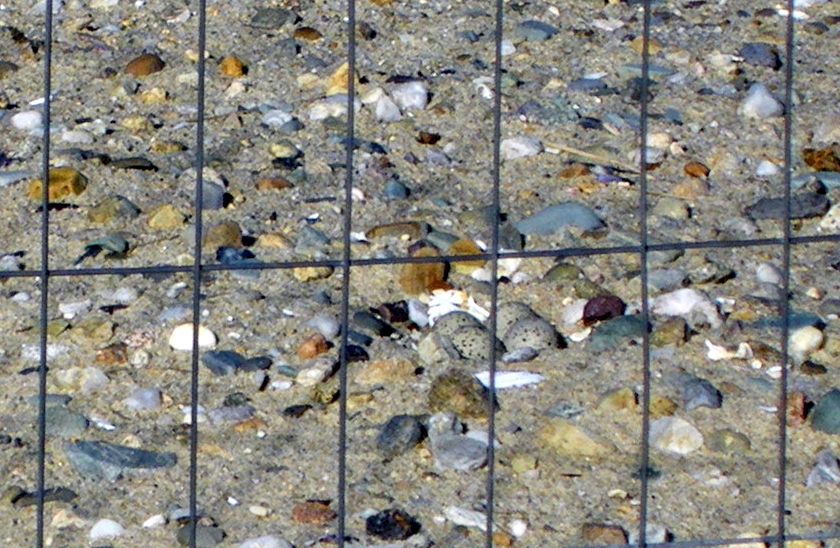Piping Plover on Outer Cape Cod
A beautiful spring day offered the Turtle Journal team an opportunity for exploration on the Outer Cape on Memorial Day 2009. In the mating aggregation in Chipman’s Cove, we captured eleven terrapins with waders and hand nets to supplement our spring census. Four were recaptures from previous years; seven were first timers; several were new recruits just entering sub-adult status.
Plover Incubating Eggs in Predator Exclosure
With time to spend while waiting for the holiday traffic jam to unsnarl along the Mid Cape Highway, we explored other natural, coastal venues and found some wonderful discoveries. We ran into a nesting plover on a special barrier beach that is protected by volunteers from Mass Audubon’s Wellfleet Bay Wildlife Sanctuary. This exquisite, tiny creature that we shot through a telephoto lens rested on four eggs inside a roped off area with an inner predator excluder cage.Â
Four Camouflaged Piping Plover Eggs
Neither the four camouflaged eggs nor the piping plover itself were easy to distinguish from the beach and gravel backdrop.Â
 Click Here to View Video in High Quality
Piping Plover
While the area seems well protected from humans and mammalian predators, the greatest concern in this location is the tremendous tidal forces that affect barrier beaches in Wellfleet Bay. With a 15 foot range from highest high to lowest low tides, an inopportune southwesterly blow that augments an astronomic tide could produce catastrophic results for these tiny, federally protected birds.Â
Former Salt Marsh Reclaimed by Cape Cod Bay
On the west shore of Lieutenant Island where the Turtle Journal team found five pilot whale bone skeletons this last winter (see Discovery of Historic Pilot Whale Bones Hints at Cape Cod’s Past and Cape Cod Times “CapeCast: Pilot Whale Graveyardâ€), we explored a peaty area of former salt marsh that had been reclaimed by Cape Cod Bay over the centuries. This spot is seaward by 50 to 100 feet from the line where the pilot whale skeletons became exposed by storms and tides this winter. We had been watching a spot to the top left of this peat field in the photo above because we had discovered some rough hewn wood in March that we thought may indicate historic human activity.
Pilot Whale Bone Exposed by Tidal Erosion
A piece of pilot whale bone had become exposed in the proximate area of the rough hewn wood that has disappeared. No other pieces of the skeleton have become exposed and we did not probe beneath the peat during this outing.
Click Here to View Video in High Quality
Explosed Pilot Whale Bone
In much worse condition that the bones we had discovered in the winter, the bone fragmented easily to the touch.
Thousands upon Thousands of Male Fiddler Crabs
No springtime trip to Lieutenant Island and the Outer Cape could be satisfying without a spending a few moments with the fiddlers of the flats. Male fiddler crabs sport enormous claws, some left-handed, some right-handed, that they use to attract females. Inspecting this one small, barren salt marsh area off Turtle Point, you can count thousands upon thousands upon thousands of male crabs dotted across the landscape like snowflakes, guarding the opening to their underground burrows and waving their huge fiddles into the air to grab the attention of any female crab bold enough to stroll throught he gauntlet.Â
Click Here to View Video in High Quality
Males Waving Their Fiddles for Female Attention
A glorious weekend of discovery at the cusp of another great research season on the Outer Cape.





